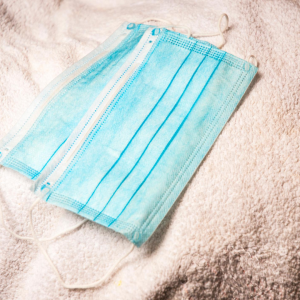Specialized Treatment for Vertigo
Vertigo is one of the most commonly diagnosed vestibular disorders. The vestibular system includes parts of the inner ear and brain that process information controlling balance and eye movements. Problems with vestibular function include benign paroxysmal positional vertigo (BPPV) and vestibular neuritis, although there are many other possible causes of vestibular dysfunction. BPPV is the most common vestibular disorder, and 90% of cases can be successfully treated in 1-3 visits. BPPV stands for:
- Benign: It is not life-threatening
- Paroxysmal: It comes on in sudden, brief spells
- Positional: It is triggered by certain head positions or movements
- Vertigo: A sense of rotational movement.
People with vestibular disorders such as BPPV may experience problems with vertigo, dizziness, visual disturbance, and/or imbalance. Other problems may arise such as nausea, vomiting, decreased ability to concentrate, and fatigue. These symptoms may also contribute to emotional problems like anxiety and depression. Patients with vestibular disorders may become more sedentary in order to avoid aggravating symptoms of dizziness. As a result, patients may also develop joint stiffness, decreased muscle strength and decreased flexibility, which physical therapy can help with.
In a nutshell, BPPV is a mechanical problem in the inner ear in which some of the calcium carbonate crystals get dislodged and migrate into one or more of the fluid-filled canals where they are not supposed to be. The crystals interfere with the normal fluid movement that these canals use to sense head motion, causing a false signal to be sent to the brain, resulting in a sensation of spinning. The vast majority of BPPV cases occur for no apparent reason, and many people describe that they simply went to get out of bed one morning and the room started spinning. It can affect adults of any age, but is more common in seniors. Some forms of dizziness may take weeks of consistent exercise to resolve, however patients with BPPV may be successfully cured in as little as one visit.
Vestibular rehabilitation is an exercise-based therapy which can aid in reducing vertigo and dizziness, gaze instability, and improve balance. Patients are evaluated by a doctor of physical therapy. Each patient’s treatment is individualized in order to target the specific causes of dizziness or imbalance. The treatment consists of specific maneuvers involving a series of head movements in order to guide the crystals back into the correct location. It is important to be evaluated by a physical therapist who is specially trained in vestibular disorders in order to ensure that the correct maneuver is performed.
We are proud to have the expertise of Katie Spurrell, DPT who is trained in the specialized treatment for Vestibular Disorders. To get an appointment with Katie, call us at the office numbers below. Your physician can write a referral for treatment at our SDSM Physical Therapy office.
Alcohol and Men: New Dietary Guidelines
Every five years the USDA reviews our nation’s dietary trends and current research on health and nutrition. The 2020-2025 Dietary Guidelines are in progress and the Advisory Committee has included new advice on the consumption of alcohol for men. The new draft report advises that the amount of alcohol that men consume should be limited to 1 drink per day. The guidance for women remains the same and is stated as less than 1 drink/day.
Past dietary guidelines have recommended alcohol consumption not exceed 2 drinks per day for men and 1 drink per day for women, and has been generally stated as 10-14 drinks/week for men and 7 drinks per week for women. The new guideline is a significant departure from past advice. The Dietary Guideline Advisory Committee states that consuming the current limit of two drinks per day is associated with a “modest but meaningful increase” in death rates due to all causes, compared with just one drink per day. Many factors contribute to the mortality rate associated with alcohol. The lowest risk of all cause mortality from alcohol consumption is 1-1.5 drinks/day for men and 0.5 drinks/day for women. Since it is impractical to recommend a fraction of a drink per day, the committee recommends women limit alcohol to ‘1 drink per day but not every day’.
For those who drink alcohol, recommended limits for better health
are up to 1 drink per day for both women and men.
The science behind the new guidance:
- Emerging evidence suggests the magnitude of risk
- associated with drinking smaller amounts of alcohol may have been underestimated in the past.
- Men are more likely to drink than women and experience more alcohol-related health issues and accidents compared to women.
- Greater understanding of the association of alcohol consumption with at least 7 types of cancers, and that cancer mortality is now equal to that of cardiovascular disease, the #1 killer of Americans.
If you don’t currently drink, there is no evidence indicating it will improve your health to start drinking. However, if you do consume alcohol, there is ample evidence that limiting your intake is best for your health. In our next newsletter, we will take this a step further helping you to better understand how alcohol affects the body, your nutrition, and tips to reduce consumption. Stay tuned!
You can find the entire draft of the Scientific Report of the 2020 Dietary Guidelines Advisory Committee here. You can jump to Chapter 11 which addresses alcohol exclusively.
Short Bites on COVID-19:
Which mask is best? Which mask is worst?
A study out of Duke University published in Science Advances tested 14 different masks and gives us some answers, corroborated by other studies:
- Fleece or neck gaiters may be the worst masks, as far as stopping respiratory droplets from reaching surrounding people. The material diffuses the larger droplets, creating smaller ones. Bandanas are not much better. If you wear a neck gaiter, review our prior article on the most effective fabrics (ie. multi-layered silk and chiffon) or replace it for a more effective barrier.
- Face masks with valves are designed to protect the wearer from breathing in harmful particles. But particles from the wearer are expelled, so they are not as safe for those around you. Masks with valves came in sixth place as most effective in the study of 14 masks.
- The surgical mask with 3 layers is the best mask for protection against COVID-19, second only to N95 fitted masks. The downside is they cannot be washed and need to changed more frequently.
- N95 fitted masks are the most effective masks in blocking respiratory droplets. These are not recommended for routine public use as they remain in high need for use by medical personnel on the front lines.

Any homemade mask should have at least two, and preferably 3 layers for better efficacy and protection. Make sure your mask covers your mouth AND your nose. Fun Fact: If you only cover your mouth, your nose now has more force for spewing the virus!
_______________________________________________
Temperature Checks Can Be Useless
The CDC notes that anyone with a fever equal to or higher than 100.4F should not be allowed to enter a facility or work place. A recent paper published in the Journal Travel Medicine and Infectious Disease evaluated 84 men in the military, with a mean age of 21, that were diagnosed with COVID-19. They measured their temperature twice daily for 2 weeks and found that many had a fever the first few days of infection, but after 5 days, none of the COVID patients had an elevated temperature. Of these infected patients ,83% never developed a fever and COVID-19 patients are known to be infectious for up to 10 days post infection. This study indicates that screening for a fever in individuals from 18-25 years of age is not effective for detecting most COVID-19 infected individuals.
The bottom line: Don’t rely solely on temperature checks to prevent the spread of COVID-19.
_______________________________________________
Wash Your Hands or Use Sanitizer?
CDC published a study in the journal, Emerging Infectious Diseases about cleaning our hands. To eradicate the virus we should wash our hands with soap and water for 20 seconds (the time it takes to sing ‘happy birthday’ to yourself twice). With hand sanitizer, we should rub our hands for 30 seconds to completely kill the virus. The sanitizer should be at least 60% ethanol (ethyl alcohol) or 70% isopropanol to be effective. Also note that the active ingredient, alcohol, evaporates in hot temperatures. So if you keep it in your car in the summer, be sure to close the lid as the alcohol may evaporate. Bring it into a cool environment before using it. If the alcohol evaporates too quickly due to heat, it will not be in contact with germs long enough to destroy them. Also, remember to make sure to clean your whole hand, including between your fingers.
UCSD Health COVID-19 Grand Rounds: Kids
UC San Diego Health has launched the COVID-19 Grand Rounds Series. This limited, six-part live video symposium focuses on topics related to the SARS-CoV-2 pandemic. The August 5th Grand Rounds was on COVID-19 and Kids, featuring two presentations by national leaders in infectious disease in pediatrics reviewing literature and what we currently understand about COVID-19 in children. A Q&A session followed. It is a somewhat in-depth review, but helpful information as we approach the start of the school year. The lecture lasts about one hour, with the Q&A starting 40 minutes in. You can view the entire series here and the session on kids from the link below.
Stay safe San Diego.
As COVID-19 continues in the community, SDSM is here for you. Whether you come into our offices for care or choose a video visit, we can assess and address your health care needs. It is important to keep up with general physicals, annual health assessments, and management of chronic conditions. Don’t put off important checks on your health especially if you have diabetes, asthma, COPD, heart problems, impaired immune function, difficulty getting enough sleep, or are experiencing high levels of stress.
SDSM continues to practice all CDC recommended infection control measures. Clinics disinfect between each patient interaction with CDC approved disinfectants, employ proper social distancing measures, and follow additional CDC infection control guidelines. When visiting our clinics you can expect fewer people in waiting rooms, to wear a mask or face covering, use hand sanitizer on entry, and be screened for COVID-19 symptoms before entering patient care areas.
We are experts in telemedicine and can coach you on self-care at home, provide advice on medications or necessary prescriptions, and can evaluate your need for an in-person visit. We continue to recommend that anyone with cold/flu/COVID-19 symptoms and patients at increased risk of complications from COVID-19 are best addressed through telemedicine appointments.
Please call us if you feel ill. Whether you have been practicing stay at home measures, traveling, or out in the community, take care to wear a mask, practice a minimum of six foot social distance from others, wash your hands frequently, and avoid touching your face, mouth, and nose. Working together, we can help you to stay safe, healthy, and thrive.
Yours in health,
The Physicians and Staff of San Diego Sports Medicine and Family Health Center

